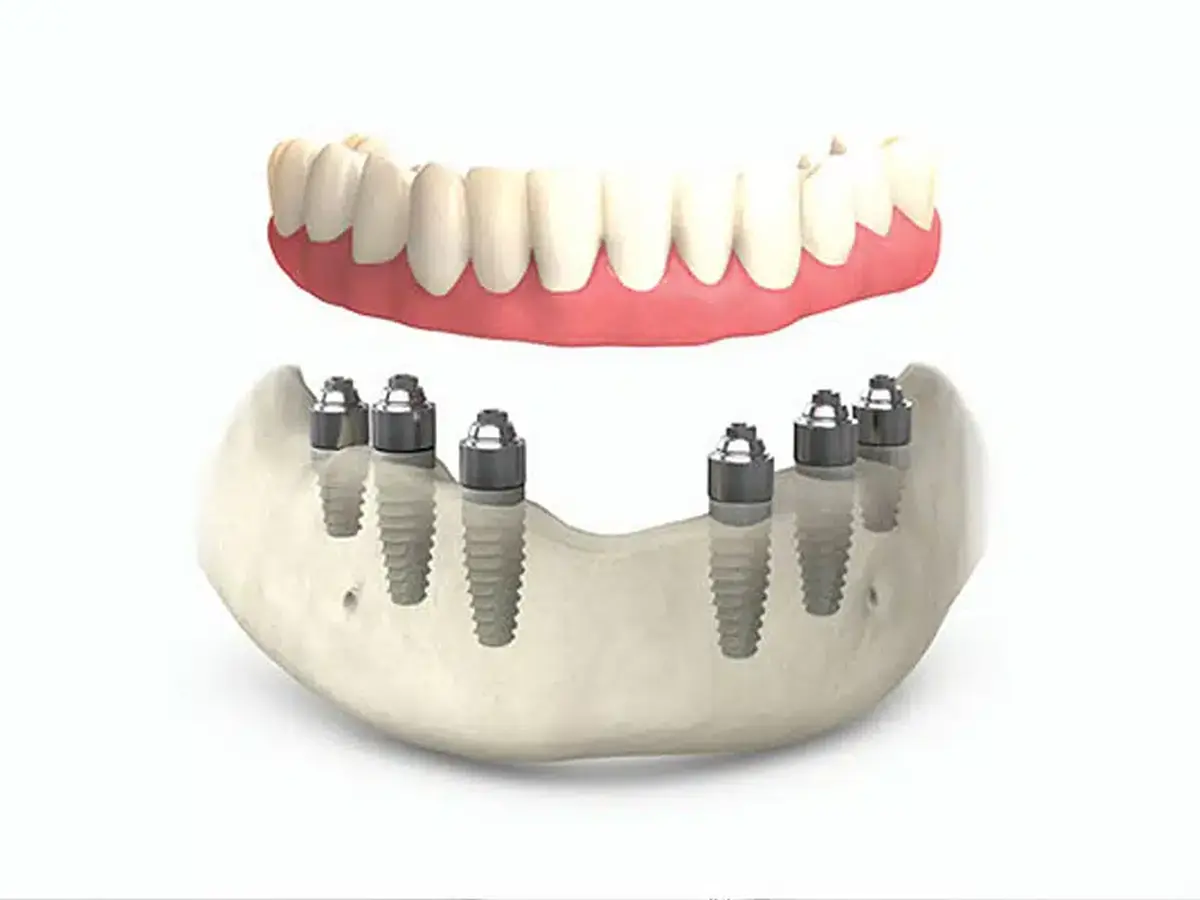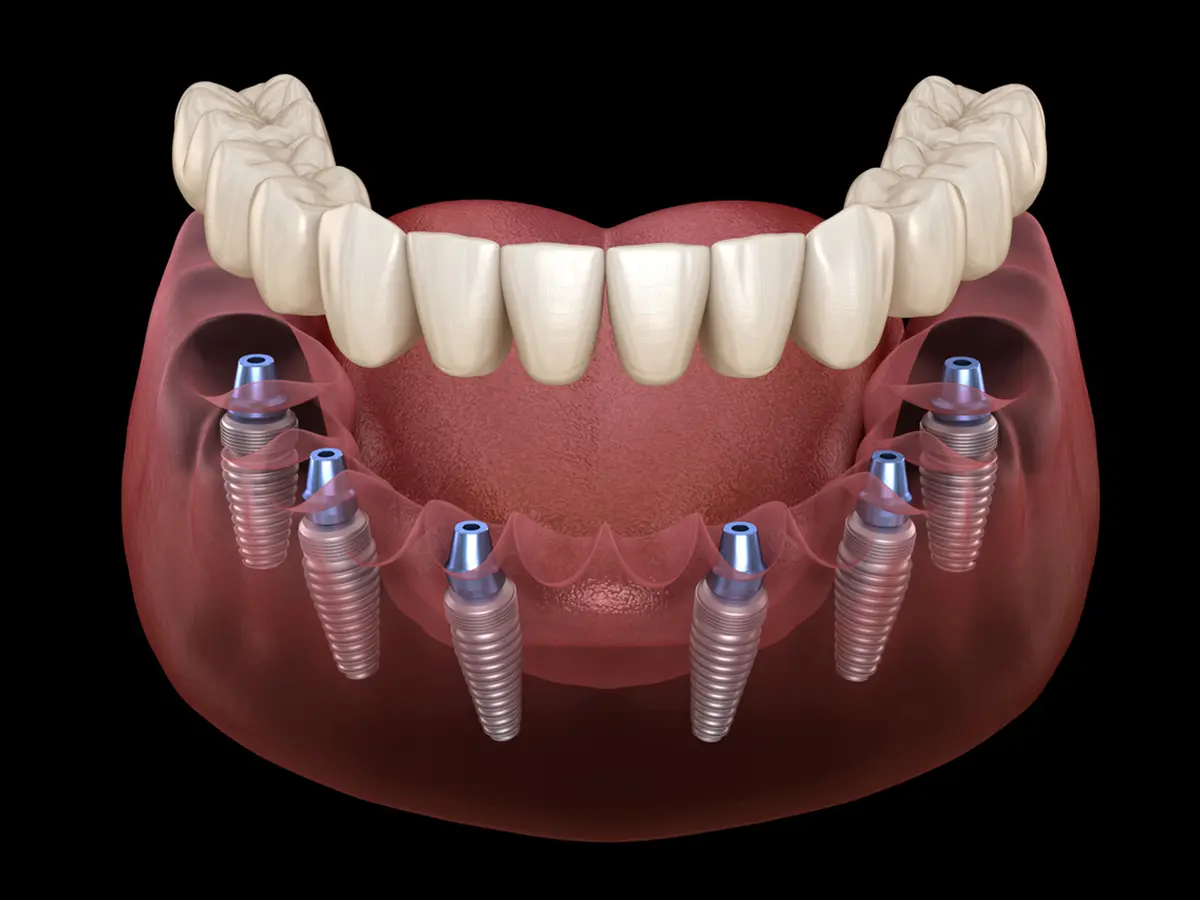
All-on-X dental implants are a popular, advanced option for patients who need to replace an entire set of missing teeth — either upper, lower, or both. This technique involves placing a small number of implants (usually between four and six) in the jaw to support a full arch of fixed prosthetic teeth.
It is a technologically advanced dental implant treatment that basically provides patients with a new set of teeth either on their lower or upper jaws or both the jaws in a single day. Ofcourse, we can replace your teeth on the same day to give you a new smile.

The "X" in All-on-X simply stands for the number of implants used to support the prosthesis. Depending on your bone structure and treatment needs, your dentist may place four, five, six, or more implants to anchor a full arch of natural-looking replacement teeth.
Rather than replacing each missing tooth with its own implant, All-on-X allows for a full arch of teeth to be supported by just a few well-positioned implants. These implants are strategically placed in the jawbone to maximize available bone and provide a strong, stable foundation for the new teeth.
In many cases, a temporary prosthesis can be placed on the same day as the surgery, allowing patients to walk out with a complete smile right away.
This treatment is ideal for people who:
Before proceeding, your dentist will evaluate your bone quality, oral health, and overall medical history to ensure this treatment is appropriate for you.

As with any surgical procedure, there are potential risks — including infection, nerve sensitivity, or implant failure — though these are relatively uncommon with proper planning and care. A full diagnostic workup, including scans and imaging, helps minimize risks and tailor the approach to your needs.